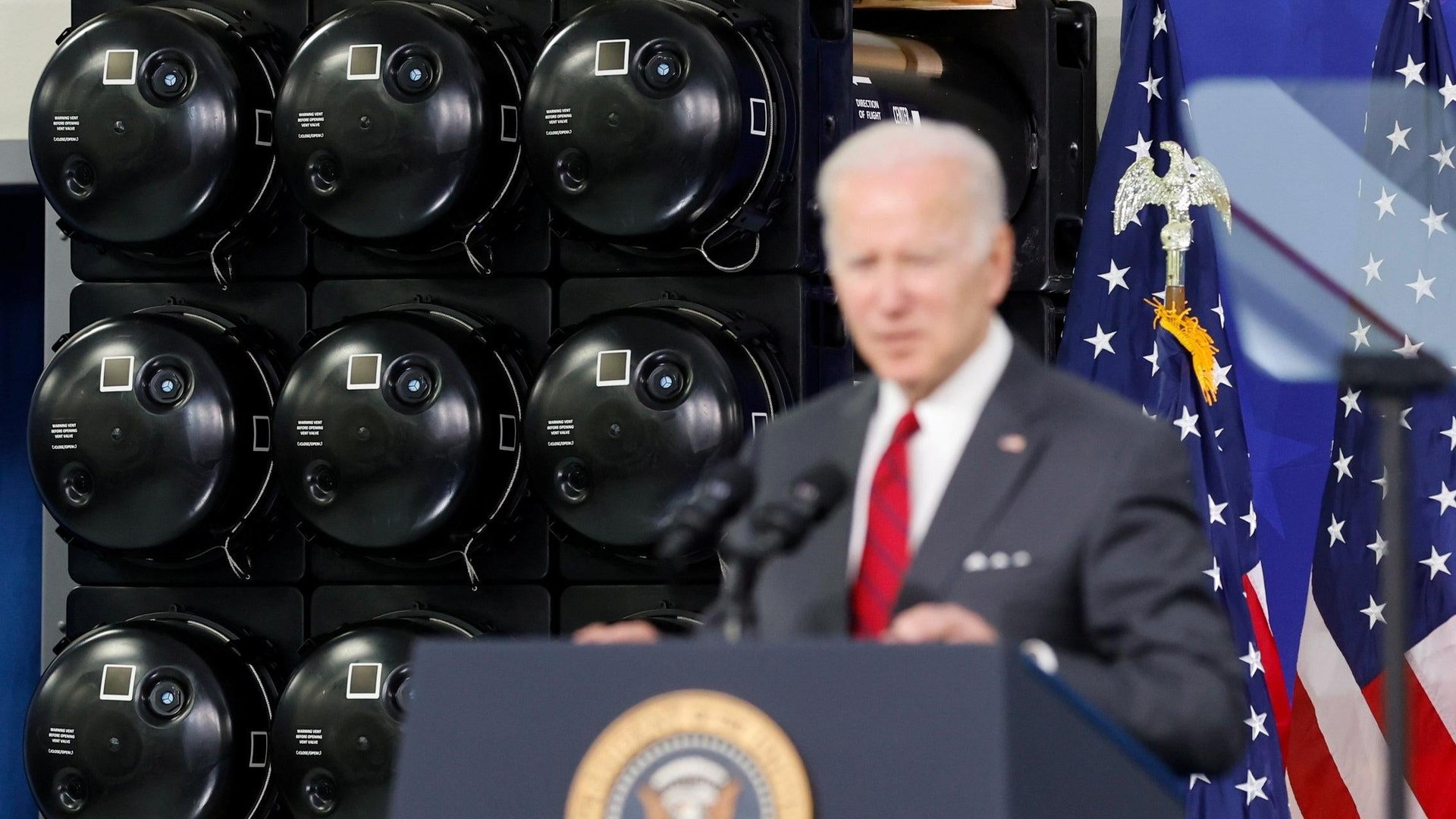Defense spending isn't what’s driving the US economy
US weapons sales are growing, but citizen spending is the story

The booming US economy, which grew at a 4.9% annualized rate in the third quarter of this year, can be credited to Barbenheimer, Taylor Swift, a land new houses—but not cash flowing to the defense sector as the US seeks to arm allies like Ukraine and Israel.
Suggested Reading
This week, US president Joe Biden asked Congress for an additional $105 billion in funding, mainly to purchase weapons for Ukraine as it attempts to repel a Russian invasion, and for Israel as it responds to Hamas’ attacks earlier this month. It’s not clear if Republicans in Congress will vote for this spending, with some sympathizing with Vladimir Putin and others embracing antisemitic figures.
Related Content
Defense spending has been rising, but thus far it hasn’t hit the heights we saw during the US occupation of Afghanistan and Iraq.
In the context of this week’s report on US economic production, defense spending added 0.28 percentage points to the 4.9% annualized economic growth. In other words, it was less important to the robust third quarter than American purchases of recreational goods and vehicles.
While the defense business is doing well, it still faces concerns over supply chains to obtain key materials and components for weapons. It also faces economic pressure to consolidate, but without violating anti-trust laws—particularly as the DOD frets about the ability to produce enough weapons. For those reasons, the owners of US defense contractors haven’t seen a major windfall; at least not yet. One ETF that tracks 33 aerospace and defense companies remains below its pre-pandemic heights: